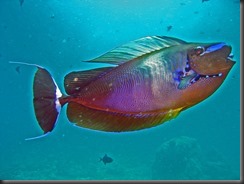 This abstract submitted to Artisanal Coastal Fisheries session at World Fisheries Congress, to be held in Adelaide, Australia in October, 2020. Submitted by David Welch et al.
This abstract submitted to Artisanal Coastal Fisheries session at World Fisheries Congress, to be held in Adelaide, Australia in October, 2020. Submitted by David Welch et al.
Throughout the Pacific the vast majority of humans live in coastal areas and for centuries have relied on coastal marine resources as food for subsistence and livelihoods. Coastal resources such as trochus, giant clams and finfish have been regularly harvested and resources like these provide 50-90% of animal protein for coastal Pacific Islanders. However, due to some of the fastest growing human populations in the world, development pressures, a lack of technical capacity and inadequate resourcing, coastal resources are reported to be experiencing heavy declines. This represents not only a threat to Pacific Islander community traditional structures but also to human health. While anecdotal reports of declines are prevalent, data that demonstrates these declines and their extent are limited and not readily available. Here we bring together available coastal finfish fisheries data from a range of Pacific Island Countries and Territories (PICTS) to assess their current status. In particular we draw on coastal catch data and underwater visual surveys to assess the status of finfish, particularly the size structure of finfish in relation to size at maturity estimates. Preliminary data analyses show that in places like Vanuatu and Fiji a large proportion of finfish taken routinely by communities are below the size at maturity, and densities of some species are well below regional averages, while at the same time fishers report declining catches, catch rates and fish sizes. We will present results of these data analyses with reference to current and historic fishing practices, in the hope that it will stimulate greater emphasis on coastal resources and to ultimately encourage a shift in policy to the implementation of appropriate and effective management that ensures the resources.
